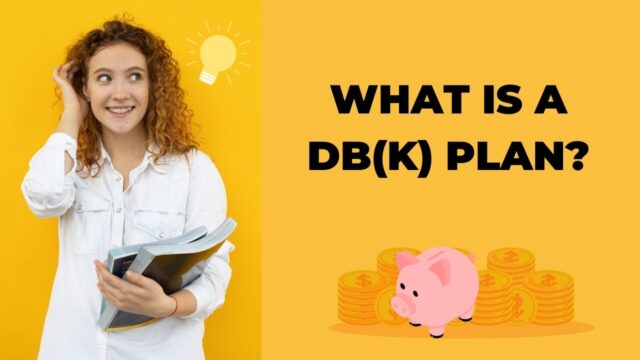
What is a DB(k) Plan
A DB(k) plan is a type of retirement savings plan that is sponsored by an employer. The name “DB(k)” comes from the fact that the plan is a combination of a traditional defined benefit (DB) plan and a 401(k) plan. The DB portion of the plan guarantees a certain level of income in retirement, while the 401(k) portion allows employees to save for retirement on a tax-deferred basis. While DB(k) plans are not as common as they once were, they can still be an important part of an employer’s benefits package. For employees, the DB(k) plan can provide a sense of security in retirement, while also allowing them to take advantage of the tax benefits associated with 401(k) plans.
How does a DB(k) Plan work
A DB(k) Plan is a tax-advantaged retirement savings plan that is offered by employers to their employees. Employees who participate in a DB(k) Plan can contribute a portion of their paycheck to the plan on a pre-tax basis. The funds in the DB(k) Plan are then invested by the employer on the employee’s behalf. When the employee retires, they will receive a lump sum payment from the DB(k) Plan that is based on their years of service and salary. The DB(k) Plan is an attractive option for employees because it allows them to save for retirement on a tax-deferred basis. Additionally, the employer typically pays all of the fees associated with the plan. For employers, the DB(k) Plan is a way to attract and retain top talent. Employees who have a DB(k) Plan are more likely to stay with their current employer than those who do not have a retirement savings plan.
Who can benefit from a DB(k) Plan
A DB(k) plan can be a great way to save for retirement, but it’s not right for everyone. Here’s a look at who can benefit from this type of retirement savings plan.
First, a DB(k) plan can be a good option for people who want the security of a defined benefit plan. With a DB(k) plan, you know exactly how much money you’ll receive in retirement, which can be helpful in budgeting and planning for your post-work years.
Another group of people who may benefit from a DB(k) plan are those who are self-employed or work for a small business. These employees typically don’t have access to employer-sponsored retirement plans, so a DB(k) can be a good way to save for their retirement.
Finally, people who are close to retirement age may also find that a DB(k) plan is a good option. This is because they may not have enough time to build up enough savings in a 401(k) or other defined contribution retirement plan.
What are the advantages of a DB(k) Plan
The biggest advantage of a DB(k) plan is that it allows employees to save for retirement on a tax-advantaged basis. The money that is contributed to the account grows tax-deferred, and withdrawals are taxed as ordinary income. This can result in significant tax savings over time.
Another advantage of a DB(k) plan is that it is often matched by the employer. This means that for every dollar that an employee contributes to the account, the employer will also make a contribution. This can help to boost employees’ retirement savings significantly.
Overall, a DB(k) plan can be a great way for employees to save for retirement. It offers significant tax advantages and employer matching contributions, which can help employees to reach their retirement goals sooner.
What are the disadvantages of a DB(k) Plan
There are a few potential disadvantages to consider before investing in a DB(k) Plan. One is that, depending on the structure of the plan, you may not have full control over how your money is invested. For example, with a traditional pension plan, the employer chooses the investments and manages the fund. This can be beneficial in terms of saving time and effort on your part, but it also means that you have less say in how your money is being used.
Additionally, DB(k) Plans typically have high fees associated with them. These fees can eat into your investment returns and leave you with less money than you would have if you had chosen a different type of retirement plan. Finally, DB(k) Plans are not portable, meaning that if you leave your job before retirement, you will likely lose all or most of the money that you have invested in the plan. For these reasons, it is important to carefully weigh the pros and cons of a DB(k) Plan before making any decisions.
How can I set up a DB(k) Plan
Employees who want to set up a DB(k) plan can follow these steps:
First, the employer will need to choose a provider, such as a financial institution or an insurance company. Then, the employer will need to decide how much they want to contribute to the plan. They will also need to choose how often contributions will be made, such as monthly or quarterly. Finally, the employer will need to enroll employees in the plan and provide them with information about how the plan works. Employees can then start making contributions to their DB(k) plan. DB(k) plans can help employees save for retirement and achieve their financial goals.


































